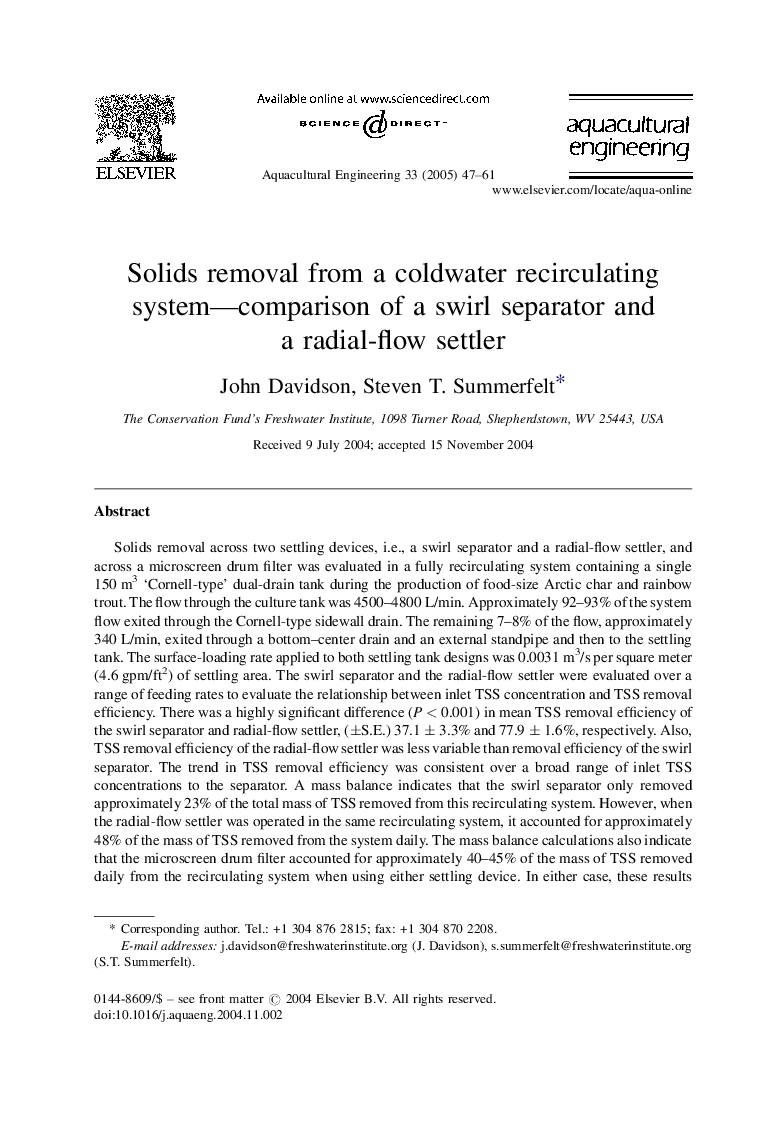| Article ID | Journal | Published Year | Pages | File Type |
|---|---|---|---|---|
| 9477381 | Aquacultural Engineering | 2005 | 15 Pages |
Abstract
Solids removal across two settling devices, i.e., a swirl separator and a radial-flow settler, and across a microscreen drum filter was evaluated in a fully recirculating system containing a single 150 m3 'Cornell-type' dual-drain tank during the production of food-size Arctic char and rainbow trout. The flow through the culture tank was 4500-4800 L/min. Approximately 92-93% of the system flow exited through the Cornell-type sidewall drain. The remaining 7-8% of the flow, approximately 340 L/min, exited through a bottom-center drain and an external standpipe and then to the settling tank. The surface-loading rate applied to both settling tank designs was 0.0031 m3/s per square meter (4.6 gpm/ft2) of settling area. The swirl separator and the radial-flow settler were evaluated over a range of feeding rates to evaluate the relationship between inlet TSS concentration and TSS removal efficiency. There was a highly significant difference (P < 0.001) in mean TSS removal efficiency of the swirl separator and radial-flow settler, (±S.E.) 37.1 ± 3.3% and 77.9 ± 1.6%, respectively. Also, TSS removal efficiency of the radial-flow settler was less variable than removal efficiency of the swirl separator. The trend in TSS removal efficiency was consistent over a broad range of inlet TSS concentrations to the separator. A mass balance indicates that the swirl separator only removed approximately 23% of the total mass of TSS removed from this recirculating system. However, when the radial-flow settler was operated in the same recirculating system, it accounted for approximately 48% of the mass of TSS removed from the system daily. The mass balance calculations also indicate that the microscreen drum filter accounted for approximately 40-45% of the mass of TSS removed daily from the recirculating system when using either settling device. In either case, these results indicate that drum filter treatment of the entire recirculating flow played an important role in preventing elevated TSS concentrations from accumulating within a recirculating system.
Keywords
Related Topics
Life Sciences
Agricultural and Biological Sciences
Aquatic Science
Authors
John Davidson, Steven T. Summerfelt,
